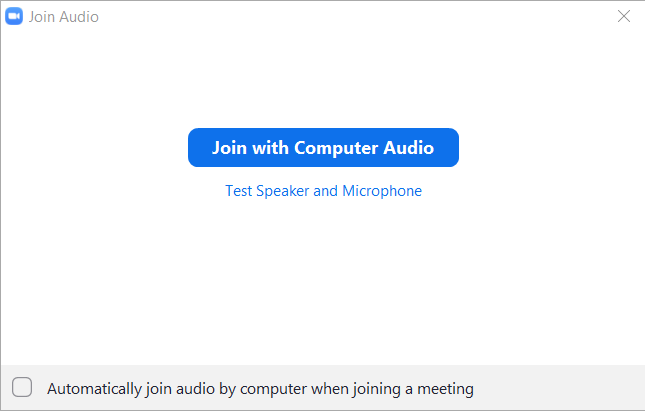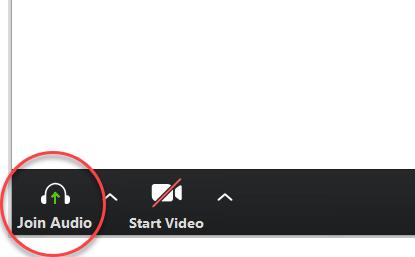Tips for Online Speakers
Number of online meetings and webinars has increased quite a lot. Many people switch to online activities with the situation of the Corona Virus in the world. Online meetings suddenly become a hot topic in the market.
For most people, this might be their first time using these online tools. Particularly, it is even more difficult for those who need to speak online, no matter whether he/she is an experienced public speaker or not.
The biggest difference between public speaking and online speaking is audience feedback. When you speak in public, you see the audience and their reactions, and you will adjust accordingly. You see your presentation from projector, and you know the audience are looking at the same screen as you do. You know when you flip to the next slide, it works.
However, when you speak online, you are like talking to a wall. You don't hear anything from your audience. You only hear yourself. You don't get any feedback. You don't know whether they can see the presentation slides you share. You don't know how your slides are shown, is it full-screen, or wrong screen. You don't know whether they can hear you. Or you don't even know whether your microphone is working, or your internet connection is breaking. When you have a problem, you don't know how to fix it, or where the buttons are, and for what.
As an online speaker it is not easy. We should not under estimate the complications. Even in a normal face-to-face seminar, you still need different helpers to work on different parts of the entire operations. Same for online speaking, you need a team, probably a small team. Below are some tips for fresh online speakers for webinars:
- You need a team, not to work alone. An online webinar setting requires immediate response to different situations, requests, or even accidental issues. Separate roles in the team should be responsible. Speakers should focus on their own presentations or interactions. Leave the rest to other people.
- As a speaker, you need to understand the operation of your online platform, at least the following:
- How to share your presentation slides, how to switch from one to another if you have multiple files or screens, and how to stop sharing. How to flip between slides during online mode. Note that sharing files, sharing windows, sharing applications, sharing screens and sharing monitors are different.
- How to configure, mute and un-mute your microphone. If necessary, how to mute all the audiences too.
- How and where to find out the chat or Q&A areas that audience might raise, and how to have it remains open.
- If there would be a Q&A session, how this should be proceeded. How to receive questions, which ones to choose, how to response, time consideration, and whether there would be facilitators. Prior agreement should be discussed with the facilitator.
- If there are files, or additional information that need to be announced, how to do it? Prepare the info in your slides, publish in the chat areas or what. Discuss with the facilitator prior to the webinar.
- There should be a facilitator. If not, you can ask for an ad-hoc host who can respond immediately. They will be much more familiar with the webinar operation and protocol with the audience than you. If necessary, arrange a rehearsal.
- You need a suitably quiet environment, with stable internet connection. Wired connection will be more reliable because WiFi signals can fluctuate.
- Real-time polling or surveys, if available, should be requested and prepared ahead of time by the administrator.
Finally the last but also important tips. These online webinar platforms or tools are designed with different User Interface for different roles of involved people. The scene that speakers see is very likely different from the scene audience see. Because of this, speakers do not see what the audience are seeing, and that's a very bad feeling. When the speaker starts to present, he is already in the speaker's scene. Here is a suggestion for the speakers:
- You need a second screen which show the audience scene, and you should place them in a way so that you can see both at the same time.
- A tablet or iPad would be ideal, or if not available, your smart phone is fine too. You can also handle both scene on the same computer by using incognito windows and browser-based operation of the online platform. But it will require more technicals.
- When you login the same online meeting or webinar with 2 devices, you will most likely receive echo even if only one of them are un-mute. As a speaker, you need to talk. There is a solution to this with a easy setting. Just DO NOT configure the audio setting with the secondary login. See below for more details.
Zoom is a quite common platform used for online meetings and webinars. Below we use Zoom as an example how to avoid echo when 2 devices are logged in to the same event. Similar settings might also be available on other online platforms too. Enjoy your online experience.
If you are new to Zoom, the first time you enter a Zoom meeting or webinar, it will ask you whether you Join with Computer Audio like the following:

Just DO NOT answer this, and leave it alone. This way Zoom will not configure your computer or device with audio setting, and there will be no echo arising from this device. When computer audio is not set, you will see the status of the icon on the left bottom corner Join Audio, meaning you still can re-enter and select computer audio if you wish.

If this is not your first time joining Zoom, there is a good chance that you already have configured your Computer Audio setting by default. It's fine. What you'll have to do is to de-activate your computer audio:
- In your Zoom software or app, go to the bottom left icon. There is an arrow beside the microphone icon. Click on the arrow and you will find a number of options
- Select Leave Computer Audio as in the below diagram

It will return to the computer audio unconfigured status. If you wish, you can always re-activate it again.
- Log in to post comments


